Tuesday 28 February 2017
69: Saunacast: Birth Freedom, Gut Healing & Healthy Starches
Join Katie and Heather from Mommypotamus in this candid episode about birth freedom, ways to heal the gut and if starch is good or bad (hint: it is good, but it depends on the type and the amount). They also talk about the skin microbiome and the oral microbiome.
Continue Reading...69: Saunacast: Birth Freedom, Gut Healing & Healthy Starches
source https://wellnessmama.com/podcast/birth-gut-healing-starches/?utm_source=rss&utm_medium=rss&utm_campaign=birth-gut-healing-starches
Monday 27 February 2017
68: The Miracle of Microbirth: What Every Mother Should Know

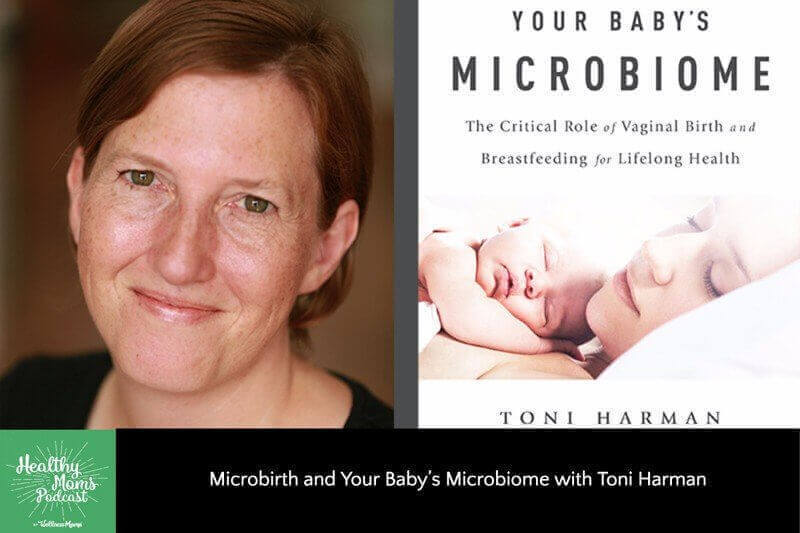
Birth. There can be no doubt it’s one of life’s most personal, miraculous, and yet nerve-wracking events. And now thanks to new research in the last few years and a film called Microbirth, we’re discovering even more about the fascinating science behind it.
My guest is Toni Harman, documentary filmmaker turned birth warrior turned author. A graduate of Exeter University and London Film School, she took her extensive Hollywood filmmaking experience to the subject of microbirth, which entered her life in an unexpected and deeply personal way.
I’m sure so many of us can relate to her story … of a birth that didn’t go as planned.
How Microbirth Was Born
Toni can trace it all back to the birth of her daughter, Willow. As many first-time moms do, she envisioned a peaceful natural birth with scented candles and soft music. She wrote up a birth plan and packed it in her hospital bad, expecting it to be followed … or at least consulted.
But at the hospital, nothing happened as planned. No one asked her about her choices. The birth plan never made it out of her bag.
Toni underwent an emergency C-section, and struggled to breastfeed as she had wanted. Despite the incredible blessing of a healthy baby girl, she left the hospital with a whole new set of questions and a sense of uneasiness.
What had gone wrong? Why wasn’t she asked what she wanted? Why, mixed in with all the miraculous moments, did she have a feeling of … trauma?
She wondered: What was the real story behind how women are experiencing birth today?
At the time she didn’t know about birth pioneers like Ina May Gaskin, Michael Oden, and Elizabeth Davis. She certainly didn’t know anything about microbirth or what that meant for future health. But as a filmmaker, Toni knew one way to get answers to her questions: she got out there and started asking them.
And so the revolutionary film Microbirth was born.
In This Episode, You’ll Learn
- the surprising discoveries researchers are making about the microbial aspect of birth
- how birth sets a baby’s gut health … and why it matters for a lifetime
- simple ways to build up mom’s gut health during pregnancy
- the impact of vaginal vs. C-section birth on bacterial “seeding”
- why a “dirty” blanket from home should be in your hospital bag!
- what the composition of breastmilk does for baby’s gut health
- a surprising new technique that might improve C-section outcomes (and give mom and dad a sense of control)
- what to say and do if your doctor won’t listen, and how to find the support you need
- how to make peace with yourself when things go “wrong”
- the age when baby’s microbiome stabilizes and what to do until then
The Healing Microbirth Message
I couldn’t agree more with Toni that we need to talk about birth choices with more openness and less judgment. I have, after all, experienced 6 births that ran the gamut from peaceful to nearly traumatic. And as a doula, I’ve seen other moms deal with the unexpected too.
We mothers get so many mixed messages about the “right” way to have a baby, which is laughable when you think about how many variables come into play during birth!
The Microbirth message is simple and so important: be informed, and you’ll be empowered to make the best choices with the hand you’re dealt.
I’m doing all I can to spread the word about this amazing film, and now Toni has a new book out on microbirth as well!
Your turn: Can you identify with Toni’s story? What do you think about the birthing options women have today? Please share in the comments!
Resources We Mention
Book:
Toni Harman, Your Baby’s Microbiome: The Critical Role of Vaginal Birth and Breastfeeding for Lifelong Health (2017)
Films:
A Probiotic Life (in development)
Microbirth (2014)
Freedom for Birth (2012)
Doula (2010)
For more on Toni’s work, check out her movement One World Birth:
Special Thanks to Today’s Sponsors:
This podcast episode is brought to you by Perfect Supplements. If your family struggles with the taste of certain nutrient-dense foods like liver or kale, Perfect Supplements is the answer. They concentrate superfoods in capsule form so you can get all of the benefits without cooking something no one will eat.
We use Perfect Supplements desiccated liver capsules (from 100% grass fed cattle). I can see why the likes of Tim Ferriss and Dave Asprey recommend this product! We also use Perfect Supplements collagen, greens powder, and fermented kale.
Perfect Supplements is USA made, incredibly reasonably priced, and super selective in purity and sourcing. You can get 10% off of any order by going to PerfectSupplements.com/wellnessmama and using the coupon code WELLNESSMAMA10. The best part is they always offer bulk discounts too!
This podcast is also brought to you by Pregnancy Exercise. If you are pregnant (or recently pregnant) and looking to get in shape, this website has workouts that can be done from home while your baby naps. Unlike other many workout programs, Pregnancy Exercise classes come with built-in education on issues like diastasis and pelvic floor muscle dysfunction. They even have a program (I wish I had known about this in pregnancy!) for turning your baby if your baby is in a non-optimal position for delivery.
The founder, Lorraine Scapens, is such a joy to listen to, and her courses are really well made and well explained. (Fun fact: They’re based in New Zealand.) If you want to check it out, go to PregnancyExercise.co.nz/wellnessmama and use the coupon code “wellnessmama” for 10% off.
Continue Reading...68: The Miracle of Microbirth: What Every Mother Should Know
source https://wellnessmama.com/podcast/microbirth/?utm_source=rss&utm_medium=rss&utm_campaign=microbirth
Friday 24 February 2017
What is Sous Vide (& How to Do It Without Plastic)
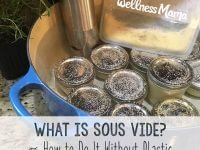
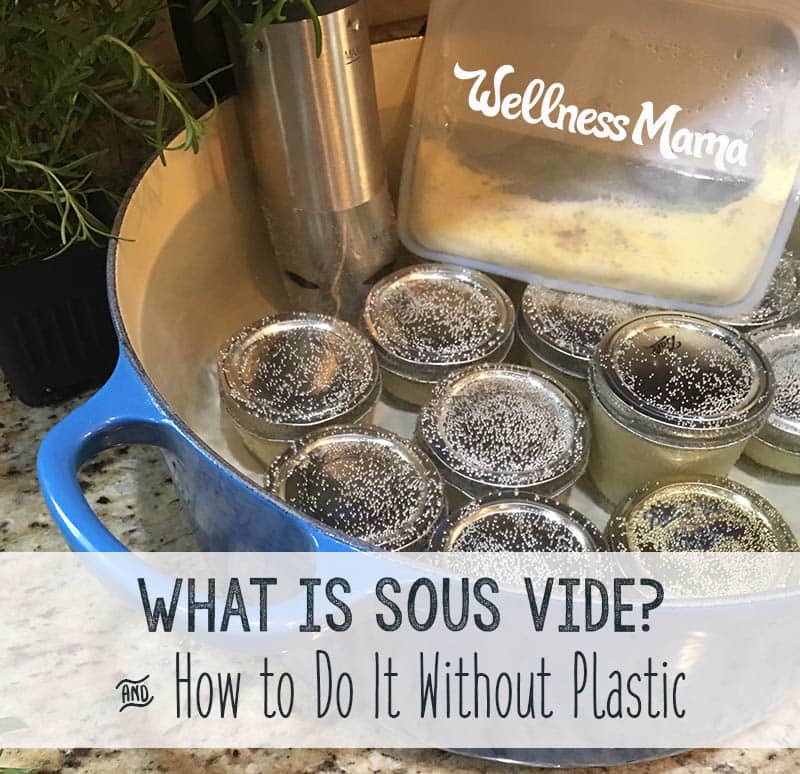
I first heard of Sous Vide years ago and my initial thought process went something like this:
Me: Hmm… sounds French. Must be fancy.. I wonder how it works.
Also me (upon researching it): The appliance to cook sous vide costs over $500 and takes hours to cook food!? I’m out. And you cook the food in plastic bags!? I’m double out!
Having never tried it, it appeared that this cooking method was simply a way to spend eight times as long cooking food in a super-expensive machine while increasing plastic exposure. Given my objections to using plastic, and my objections to spending hundreds of dollars on a non-essential appliance, I figure this was one cooking method I’d never try.
What is Sous Vide?
If you aren’t familiar with it, there is more to sous vide than my initial assessment, and it was worth a second look.
How do you say Sous Vide?
Sous Vide (pronounced soo-veed) means “under vacuum” in French. This relatively new cooking method gained popularity in the 1970s and typically involves vacuum sealing food in a plastic bag (see why I don’t like it) before cooking in a circulating water bath at a consistent temperature.
How it Works
This unique method was developed in France and allows a consistent cooking that is difficult to get in most other cooking methods. My sealing the food off from the water, it it produces a much different result than boiling or steaming. While the particular method is new, the idea of cooking food in sealed bags, parchment paper or even leaves is age-old.
The first thing I ever cooked using the sous vide method was a steak… and it was incredible. But I’m getting ahead of myself… I’ll explain how I got around the plastic issue in a minute.
Advantages of Sous Vide
The main advantage of sous vide is the ability to have precise temperature control over a period of time. This cooks food to perfect internal temperature and texture without the room for error in other types of cooking.
Think about this…
In pan cooking, grilling, and other regular cooking methods, the pan or cooking device is much hotter than you want the food to be when it is done. This means that outside parts of the food are more done than they need to be and if you don’t remove the food at the precise time, it can be overcooked. Of course, this may be the goal with some foods… like roasted sweet potatoes, but it makes meats and seafood tricky.
With sous vide, the food slowly comes up to the perfect temperature and it can hang out there until its ready to be eaten. High end restaurants have been using sous vide for years because of its ability to consistently produce perfect results and its time flexibility.
Disadvantages of Sous Vide
I know, I know… there’s always a downside. In this case, you can probably already guess them:
Expense
Call me old fashioned but I’m not up for spending over $500 on a single use cooking appliance. That’s how much most of the original models cost, and restaurant models can cost many times that much. Sure, I’ll dish out the money for a great blender but I use it multiple times a day. I just couldn’t justify this for something like a sous vide.
The Plastic
On top of the cost, I wasn’t up for spending more money on a vacuum sealer and I certainly wasn’t up for cooking food in plastic. I’ve gone to great lengths to ditch all the plastic in our kitchen and I wasn’t bringing it back… even for some amazingly perfectly cooked steaks and seafood.
How to Sous Vide Without Plastic
A year or so ago, I decided to give sous vide a second look and figured out a way to solve both of my main problems with it. Spoiler alert- I now use this method all the time in our home and wanted to share why we love it so much!
Less Expensive Sous Vide
Thankfully, price is no longer as much an issue, as there are now smaller models that attach to a pot or pan you already have and cost under $100. This is the one I have.
Without the Plastic
The bigger hurdle was figuring out how to get rid of the plastic. Keeping the food from touching the water is vital to this method working, but I wasn’t giving in on my pledge to avoid plastic.
After some failed experimentation, I’ve settled on two methods that work well:
- Mason Jar Cooking-I’ve found that small (4-8 ounce size) mason jars are perfect for cooking foods like eggs, creme brulee and other space variable foods.
- Cooking in Silicone Bags– For meats and seafood that don’t fit well in jars, I’ve found that silicone food storage bags work really well without the need for plastic. I use these silicone bags for smaller items and these for bigger items.
Supplies You’ll Need
There are dozens of ways you can try sous vide cooking at home. I use a bare-bones method with the least expensive equipment I could find and it works really well. This is the equipment I use:
- Sous Vide Immersion Circulator— This easy to store immersion circulator is the least expensive option I’ve found and it works really well. It can be used with the stainless steel insert from an Instant Pot or with any other adequately sized pot.
- Silicone Food Storage Bags— I use these silicone bags for smaller items and these for bigger items.
- Large pot that is deep enough to submerge the food you are cooking.
What to Do:
- Fill a pot with water and attach the immersion circulator to the side. Set the temperature for the food you want to cook (the manual has a reference chart for this).
- Let it come up to temperature. In the meantime, place the food you plan to cook in a glass jar or silicone food bag (preferred). If using a silicone bag, remove as much air as possible. To do this: slowly lower the bag with the top unsealed into the pot of heating water. Be careful not to let any spill into the bag. This pushes the air out and creates a similar air-tightness to vacuum sealing.
- Seal the bag with an airtight clip.
- When water comes up to temperature, place the bag with the food into the pot and leave for the correct amount of time.
- Once cooked, you can leave the food in the water for up to an hour at temperature without over cooking it.
- For meats and seafood, I like to create a sear on each side right before serving. I bring a cast iron skillet to high heat and sear for 1-2 minute per side.
Sous Vide Recipes
Almost any recipe can be easily adapted for sous vide cooking. I find the most noticeable difference with meats, eggs and seafood. These egg bites are one of our current favorites, but I’ll be posting more soon!
Sous Vide Cooking: Bottom Line
Do you need another kitchen appliance that gently cooks your food in a water bath? Nope.
Is it worth trying if you love restaurant quality food without eating out? Absolutely.
The original method had some problems like cost and plastic use. Newer models and silicone food bags make sous vide cooking at home healthier & easier.
I wouldn’t prioritize an immersion cooker as a must-have kitchen appliance. I received it as a gift and use it much more than I expected. It does make better food that we find in restaurants and may save us money over time. I’d put this on my wedding registry if I had it to do over again… but it won’t replace our blender or food processor as a core kitchen appliance.
Ever tried sous vide? How did you like it? Will you give it a shot?
Continue Reading...What is Sous Vide (& How to Do It Without Plastic)
source https://wellnessmama.com/156270/sous-vide-without-plastic/?utm_source=rss&utm_medium=rss&utm_campaign=sous-vide-without-plastic
How Thyroid Disease Affects Pregnancy and Fertility


There aren’t many things I can say I’m an expert at in this world. In fact, the short list would include accidentally killing house plants, procrastinating until I have 8 loads of laundry to fold, and cooking dinner one handed while holding a baby.
But there are a couple other things I’m pretty close to expert status at after years of navigating them: pregnancy and thyroid disease. With about 5 combined years of pregnancy and almost that many since my thyroid diagnosis, I’ve learned the hard way how to navigate them both… especially together.
Thyroid Disease + Pregnancy
Pregnancy can be such a wonderful and joyful time, even though it has its struggles.
But there’s another side of pregnancy that can be heartbreaking and devastating…and that is infertility and loss. I recently shared a post about thyroid disease and the autoimmune condition often responsible for causing hypothyroidism, called Hashimoto’s thyroiditis. Not only can it cause debilitating fatigue, anxiety, hair loss, inability to lose weight and so much more — it can also cause infertility and problematic pregnancies.
This is something that the conventional medical community acknowledges, but there don’t seem to be many good resources for pregnant women with thyroid disease. During pregnancy and postpartum, our hormones go through the ringer. This isn’t a bad thing by any means, but because of the overwhelming amounts of hormonal changes, it can trigger an adverse thyroid reaction.
An undiagnosed or not properly managed thyroid problem can also lead to various complications with pregnancy and birth. In fact, untreated thyroid disease increases the chances of premature birth, preeclampsia, miscarriage, low birth weight, anemia and even stillbirth.
Thyroid Problems: What To Look For
It took me years to get properly diagnosed, and I’m incredibly grateful that my children are healthy and my pregnancies were just fine. But, I also wish I’d known the signs and what to ask the doctors to test.
Thyroid disease isn’t something to mess around with, especially before and during pregnancy. Anyone who even suspects thyroid disease should get tested, preferably before pregnancy or as soon as possible. Ask to see the results and make sure the doctor is using the most up to date references. Depending on the doctor’s school of thought, they may be using outdated reference ranges.
5 Lab Tests to Request
Dr. Izabella Wentz, creator of The Thyroid Secret documentary series, recommends these five tests to help pinpoint a potential thyroid problem:
- Thyroid Stimulating Hormone (TSH)— This is the pituitary hormone that measures the level of thyroid hormone in the blood.
- Free T3/Free T4— Will measure the level of active hormones in your blood.
- Reverse T3— This will help determine whether you have hyperthyroidism or hypothyroidism. It tends to be low in hypothyroid cases and high in hyperthyroid cases.
- Thyroid Peroxidase Antibodies/Thyroglobulin Antibodies (TPO/TG Antibodies)— Measures the antibodies and is a great test to spot the condition forming years before it manifests through the TSH test.
- Thyroid Ultrasound— Especially recommended if your doctor suspects abnormal growth or if you have a known thyroid condition.
If any of these labs come back out of the normal range, work with your doctor to establish some best practices to get them back within normal range. Sometimes this might look like medication, and other times, it calls for lifestyle interventions like diet, supplementation, removing toxins from your life, etc.
The Gene Factor
There is a gene mutation known as the MTHFR mutation that can also have a really big impact on pregnancy. A lot of doctor’s are not familiar with the new research on this gene and don’t recognize this mutation as a risk… but it is!
Countless women have this gene mutation and here’s why it’s worth testing. There are now even at-home tests like 23-and-me that test for this mutation.
Folate vs. Folic Acid
One key part of the MTHFR gene mutation is the inability to methylate folate correctly (especially in the synthetic form of folic acid). So as the folic acid comes into the body, it doesn’t get processed and absorbed. Pregnant women need 400 mcg of folic acid per day because it helps prevent birth defects and is essential for baby’s growth. However, if you’re a woman who has this gene mutation, you’re not going to be able to absorb folic acid properly and need to be taking the real version of folic acid called folate.
It’s a real tragedy that babies aren’t getting the right nutrients and suffering the consequences simply because doctors are missing the signs that say these moms need to be on a different form (the real form!) of folic acid. Personally, even before finding out that I had an MTHFR mutation, I chose a prenatal with a natural form of folate… just in case.
Those with this mutation should consider removing folic acid from your diet completely. It is the synthetic version of folate and tends to hide in processed foods and enriched flours. It is better to opt for healthier alternatives like veggies rich in folate and low-glycemic fruits such as blackberries. Going gluten-free is another great way to avoid folic acid. I have great options in my Wellness Mama Cookbook that you and your family might enjoy.
Thyroid Flares During Pregnancy
The most common form of hyperthyroidism in pregnancy is Graves’ disease. In fact, 1 in 1500 women will be affected during their pregnancy. This occurs when there are really high HCg levels in the body.
According to the American Thyroid Association, the most common type of hypothyroidism is caused by the autoimmune disease Hashimoto’s. The ATA states that, “Approximately, 2.5% of women will have a slightly elevated TSH of greater than 6 and 0.4% will have a TSH greater than 10 during pregnancy.”
Both of these conditions can have adverse impacts on both mom and baby, so it’s important to address them. Taking ownership of your health during pregnancy is essential for both of you. If you’re currently struggling with infertility or have suffered from miscarriage(s), take hope that there are proven steps you can begin taking to better your health and improve your chances of conceiving.
Addressing Thyroid Triggers
One big step toward thyroid health is simply addressing triggers that could be causing the thyroid to get out of line.
Leaky Gut
Leaky gut, or intestinal permeability occurs when the body is unable to process food and nutrients the right way. In essence, the gut becomes leaky, and food and other bacteria slip through the cracks triggering digestion and absorption issues. If you’re a science lover like me, you may find this article really helpful for explaining the technicality of intestinal permeability.
Nutrient Deficiencies
This is a big one. Depending on diet, it is easy to be really low in some essential nutrients like iron, magnesium, selenium, and vitamin D. Gut problems can also decrease the body’s ability to process these nutrients effectively. If there’s a problem in the gut, then no matter how much we consume of these supplements or eat nutrient-rich foods, the body won’t be able to snag all the goodness from them. This is especially important to address during pregnancy since there is an increased nutrient demand.
Adrenal Dysfunction
Symptoms like low blood pressure, decreased sex drive, mild depression, and feeling overwhelmed or indecisive, can all stem from adrenal dysfunction. Stress is a huge component to overall wellbeing. The ability or inability to handle stress can directly affect health. Our bodies release cortisol based on our reactions to circumstances and our environment. Our bodies can release too much or too little based on what it thinks it needs. When cortisol dries up, we enter a state of adrenal fatigue. (Source)
Food Sensitivities
Ever feel swollen or bloated after eating? Or get an upset stomach or experience a breakout…all of these symptoms can indicate that your body is sensitive to whatever you just ate. Food sensitivities like gluten, dairy and soy are quite common so try removing them from your diet and get ready for a huge improvement in the way you feel. Gluten can even cause leaky gut so for those trying to heal intestinal permeability, eliminating gluten is a must.
Blood Sugar Imbalance
This one goes hand in hand with supporting the adrenals. When we balance blood sugar, it can decrease anxiety and thyroid antibodies. Dr. Wentz recommends reducing refined carbohydrates and ramping up the good fats and proteins. Proteins and good fats tend to keep you satisfied longer and provide more energy for you to absorb.
Toxicity
A toxic buildup is also common in people struggling with thyroid disease. There are some things like the air we breathe that we can’t control. However, we can take some great strides towards detoxifying our homes. Perhaps it’s time to clean out the old products filled harmful ingredients and switch over to a more natural way of doing things. Check out my “Natural Home” and “Beauty” categories above for natural recipes to replace most household and beauty product.s
Infections
Underlying infections and bacterial overgrowth like Candida are important to address, especially for those who are having trouble conceiving. There are many natural products that can help eradicate gut infections, but I recommend following a well-researched program and working with a trained practitioner. This is especially important for those who are currently pregnant!
Iodine During Pregnancy?
In the functional world of medicine, whether or not you should take iodine is a hot topic. Some people say you need it for proper thyroid function, while others staunchly oppose it. Depending on where you live in the world, you may not need additional supplementation.
During the first 10-12 weeks of gestation, the baby is completely dependent on mama for thyroid hormone. After that, the little one needs iodine in order to produce its own hormone. The World Health Organization recommends 250 µg/d of daily iodine intake, however, in the US, our diets usually provide enough iodine so check with your doctor to see if you need additional supplementation. (Source)
Find a Doctor Who Understands the Thyroid
This probably goes without saying, but finding a doctor who understands thyroid disease and how it affects pregnancy is vital for the conceiving process (for those with infertility) and throughout pregnancy. Look for someone who is knowledgeable about the thyroid and open to lifestyle interventions alongside necessary medications if they’re needed.
If there is one thing I’ve learned in all these years of managing pregnancy and thyroid disease together, it is this:
You are your own advocate, and you are your baby’s advocate. If you suspect something is wrong, be the voice for yourself and your child. Ask questions, do research, and don’t be afraid to stand up for yourself.
More Thyroid Help (For Pregnancy & Conception)
Wading through all the information about the thyroid and pregnancy can feel a little overwhelming. You’re not alone, and I want to share one resource I wish I’d had years ago. This new documentary series called The Thyroid Secret, has information from dozens of the top thyroid experts. It was created by my friend and Hashimoto’s overcomer, Dr. Izabella Wentz. There’s an entire episode dedicated to fertility and the thyroid so whether you’re trying to conceive, currently pregnant or struggling with postpartum thyroiditis; this series will be very helpful.
Dr. Wentz has invited Wellness Mama readers to join her for a free screening beginning March 1st. Reserve a spot here.
Do you or someone you know suffer from infertility or high-risk pregnancies? I’d love to hear your thoughts in the comments!
Continue Reading...How Thyroid Disease Affects Pregnancy and Fertility
source https://wellnessmama.com/156213/pregnancy-thyroid-disease/?utm_source=rss&utm_medium=rss&utm_campaign=pregnancy-thyroid-disease
Wednesday 22 February 2017
Sous Vide Egg Bites Recipe (Make Them At Home)

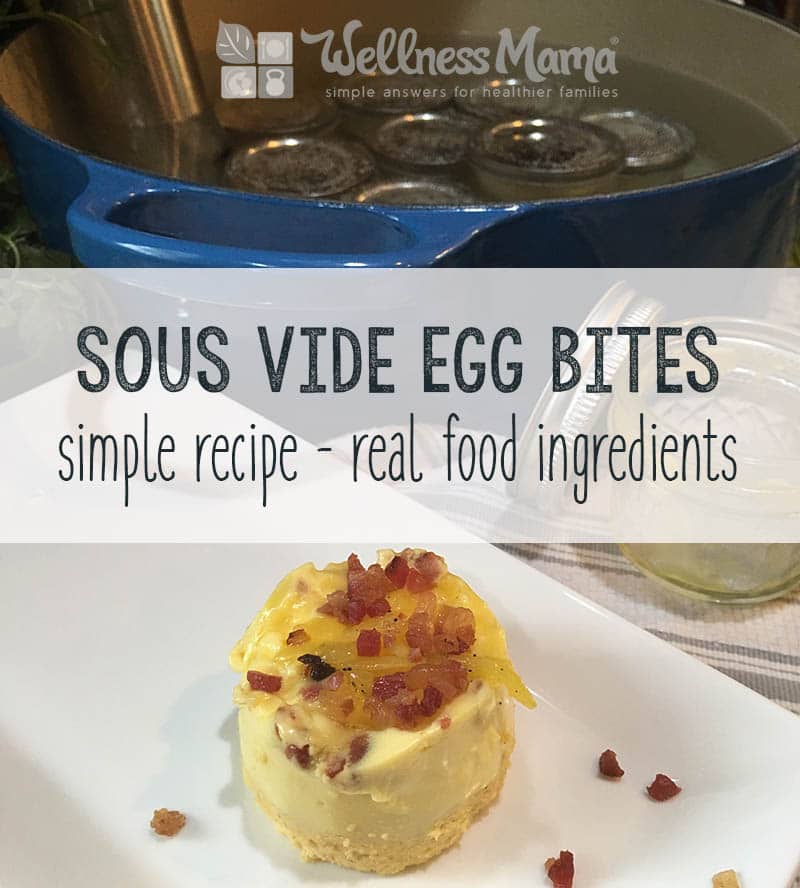
Earlier this year, Starbucks announced a new menu offering: Sous Vide Egg Bites. They are one of their only gluten free food options and I’ve seen several people raving about them on social media. I tried them while traveling when there were no other decent breakfast options and I’ll give it to Starbucks on the taste… they are good.
Unfortunately, they contain carrageenan and maltodextrin: ingredients I usually avoid. They also cost about $5 (or more in airports), which makes them much pricer than our normal breakfast options. In fact, for our whole family to eat them, we’d have to spend almost $40! Instead, I figured out how to make them at home with real food ingredients and a whole batch costs about what one order costs in a coffee shop!
Why Sous Vide Rocks
I’ve been experimenting with Sous Vide cooking for about six months and it has become one of my go-to kitchen gadgets. If you aren’t familiar with it- Sous Vide cooking uses circulating water at a carefully controlled temperature to achieve incredible results. The best steaks, chicken and eggs I’ve ever cooked were cooked in a sous vide.
In the past, this method required a big machine and was most often used in restaurants. Most methods also use plastic bags to submerge the food in water (so I’d never tried it because we avoid plastic if at all possible).
Sous Vide at Home!
Now, thanks to smaller and much less expensive home sous vide immersion machines (like this one that I have), Sous Vide is possible at home! It is still a pretty expensive kitchen gadget, but I asked for it for a gift for a big-ish birthday (me=getting old!) and have used it a lot!
After much experimentation I’ve also found that this recipe is possible (but not quite as good) without a Sous Vide machine and in fact you can do it three ways:
- Mason Jars in Sous Vide– The traditional way with a sous vide machine in a pot of water and small mason jars. This yields the best texture and result. I’ve found that 4 ounce mason jars and 8 ounce mason jars both work.
- Silicone Bags in Sous Vide– With silicone bags (like these) using a sous vide machine and a pot of water. The texture is amazing but the presentation isn’t as pretty. This is the method I use to sous vide most other foods without using plastic. Since Sous Vide is low-temperature cooking, I don’t worry about using the silicone.
- Egg Poaching Cups– By poaching the eggs using egg poaching cups in a skillet of water. This is the fastest method and also the least expensive if you don’t already have a sous vide machine.
Sous Vide Egg Bites
Once you’ve secured one of the three cooking methods above, you’ll also need the ingredients and some patience! Starbucks lists their ingredients online so the recipe was relatively easy to duplicate. I was surprised that the first ingredient was cottage cheese! I tried making these without it, but cottage cheese definitely gave the best flavor and texture. Other ingredients include eggs (obviously), cheese, cream and optional ingredients like bacon, vegetables or other add-ins.
Time Saving Tips:
- Make these with just eggs and cheese and add other flavors as toppings when you re-heat.
- Make a double or tripe batch of these while the Sous Vide is running and keep in the fridge until ready to use. I often make 16-24 to keep in the fridge for several days of breakfasts.
- Use 4 ounce size mason jars for a small breakfast or 8-ounce jars and double the recipe for bigger kids or adults.
Sous Vide Egg Bites Recipe (Low-Carb, Keto, THM-S)
Author Katie – Wellness Mama
Make the popular Sous Vide Egg Bites at home with higher quality ingredients and save money over the expensive restaurant options. There are endless ways to mix up this recipe and it is a great one to make ahead for breakfasts.
Ingredients
12 eggs
1/2 cup cottage cheese
1/2 cup heavy cream
1 cup Gruyere or cheese of choice, grated
1/2 teaspoon each of salt, pepper, garlic powder and paprika (or any other spices you like)
1/2 teaspoon of hot sauce of choice (optional)
2 Tablespoons butter
10 slices of bacon, cooked (optional)
any cooked vegetables you like (optional)
Instructions
Set the Sous Vide machine to 172 degrees. This is the common temperature for eggs and you can cook almost any egg recipe this way.
Crack the eggs into a blender or food processor and add the cream cheese, heavy cream, hot sauce and spices.
Blend on medium speed until just blended and smooth. You don’t want to add extra air by blending on high.
Use the butter to lightly grease 10 4-ounce mason jars (or five 8-ounce jars). You can also easily double or triple this recipe, just use more jars!
If using bacon and vegetables, place these in the bottoms of the jars. Add the grated cheese to the jars.
Pour the egg mixture into the jars and hand-tighten the lids (do not over-tighten!).
Cook for 50 minutes (If you are planning to re-heat) or one hour if you are planning to eat right away.
Remove from heat and refrigerate right away if not consuming immediately. In theory, these should last at least a week in the fridge because they were cooked at over 140 for over half an hour, but we’ve never had them last that long without being eaten!
Notes
If making in egg-poaching cups without a sous vide machine, follow the steps to mix the ingredients and assemble in egg poaching cups instead of mason jars. Add these to a skillet of boiling water until eggs are cooked. Do not attempt this method with mason jars, as they will crack!
This recipe is incredibly adaptable and can be made without cheese for those with dairy allergies or who are strict paleo. It is naturally low-carb and keto-friendly. Also, since I’ve had several readers ask about various recipes, this would be an “S” meal on the Trim Healthy Mama plan.
Ever tried Sous Vide? Will you try it?
Continue Reading...Sous Vide Egg Bites Recipe (Make Them At Home)
source https://wellnessmama.com/156155/sous-vide-egg-bites/?utm_source=rss&utm_medium=rss&utm_campaign=sous-vide-egg-bites
Monday 20 February 2017
67: Easy Everyday Detox Tips with Megan the Detoxinista
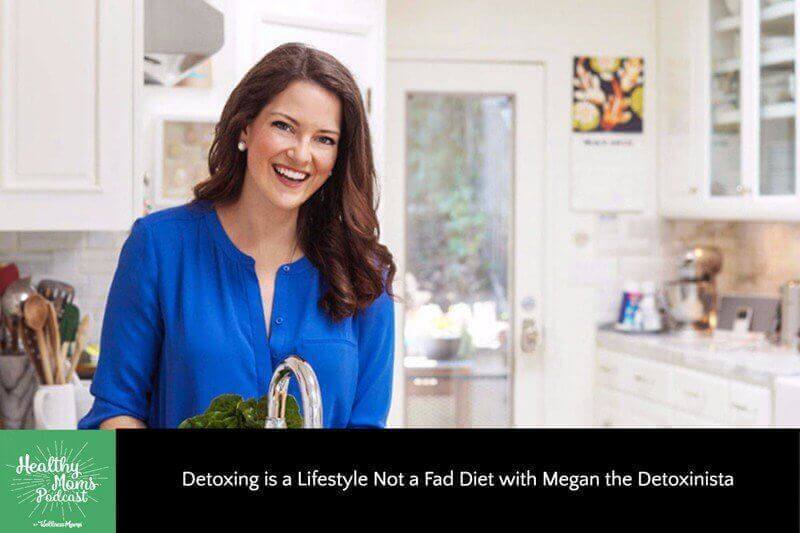
The lovely Megan Gilmore—perhaps better known as the popular health food blogger “The Detoxinista” and author of Everyday Detox—sat down with me to share her fascinating journey from fast food junkie to green smoothie goddess.
In her earlier days of searching for a healthier lifestyle, Megan tried a variety of extreme detox diets but found she would always yo-yo back to fast food or binge eating. Now a certified nutritionist consultant (CNC) with years of experience under her belt, she’s settled on a more moderate “everyday detox” approach that keeps her on track and works for her whole family.
More real food, more veggies, more sleep. That’s a detox that’s doable!
Everyday Detox for Your Best Health
So what does it mean to “detox,” really? That word can certainly take on a host of meanings in the health world.
Megan defines it as eating nourishing foods that support the body’s natural detox functions. And this makes so much sense. Every day we are exposed to toxins, many of which are beyond our control, creating a burden on the body. Everyday detox means also taking in, every day, those foods that best support the body’s design for purification, digestion, and elimination. (Basically, green veggies!)
This creates a sustainable, ongoing detox.
Everyday Detox for Your Best Family
I especially love Megan’s openness about the challenges and joys of being a mom and entrepreneur. She even developed the fast and easy recipes in her new No Excuses Detox cookbook while babywearing. (I can so relate!)
Because we’re both multitasking moms, we speak the same language when it comes to cooking. The ingredients in her cookbook are easy to find and steps kept to a minimum … because of course even health-conscious moms don’t want to live in the kitchen!
We both have a deep love for the Instant Pot, big batch cooking, and “sneaking” veggies into recipes so kids don’t even know they’re there. (And let’s face it, sometimes we grownups need to hide the taste of certain veggies too!)
Everyday health eating can’t help but influence the whole family for the better. And family is very much Megan’s focus.
In This Podcast, You’ll Learn
- how the Detoxinista got her start (she wasn’t always healthy)
- the principles of her everyday detox plan that doesn’t go to extremes
- the lowdown on “food combining,” a smart alternative to counting calories
- easy ways to simplify food prep for family weeknight meals
- how Megan handles picky eating in her house
- Megan’s favorite go-to meals and snacks to have on hand
- the important fruit that makes labor and delivery easier (imagine that!)
- tips and tricks to sneak more veggies into your family’s diet
- and more!
Resources We Mention
http://detoxinista.com
https://www.facebook.com/detoxinista/
https://www.instagram.com/detoxinista/
https://www.pinterest.com/detoxinista/
https://twitter.com/Detoxinista
https://www.youtube.com/channel/UCJVECMwdj_k09B0LINh3Vgg
Everyday Detox book
No Excuses Detox book
Institute for Integrative Nutrition
Special Thanks to Today’s Podcast Sponsors:
This podcast episode is brought to you by Perfect Supplements. If your family struggles with liking the taste of nutrient-dense foods like liver or kale, Perfect Supplements is the answer. They concentrate superfoods in capsule form so you can get all of the benefits without cooking something no one will eat.
Perfect Supplements is USA made, incredibly reasonably priced, and super selective in purity and sourcing. We use their desiccated liver capsules (from 100% grass fed cattle). This product has been recommended by Tim Ferriss and Dave Asprey, and now that I’ve tried it I can see why. We also use Perfect Supplements collagen, greens powder, and fermented kale.
You can get 10% off of any order by going to perfectsupplements.com/wellnessmama and using the coupon code WELLNESSMAMA10. The best part is they always offer bulk discounts too!
This podcast is also brought to you by Pregnancy Exercise. You’ve got to check out this website if you are pregnant (or recently pregnant) and looking to get in shape. They have online programs that help women have a healthy and pain-free pregnancy by preventing diastasis and pelvic floor muscle dysfunction. They even have a program (I wish I had known about this in pregnancy!) for turning your baby if your baby is in a non-optimal position for delivery.
The founder Lorraine Scapens is such a joy to listen to, and her courses are really well made and well explained. (Fun fact: They’re based in New Zealand.) And if you are like me and have several kids, these programs can be done from home while your baby naps. If you want to check it out, go to pregnancyexercise.co.nz/wellnessmama and use the coupon code “wellnessmama” for 10% off.
Continue Reading...67: Easy Everyday Detox Tips with Megan the Detoxinista
source https://wellnessmama.com/podcast/everyday-detox-tips/?utm_source=rss&utm_medium=rss&utm_campaign=everyday-detox-tips
Thursday 16 February 2017
How to Know if You Have Hashimoto’s Disease (& What to Do)

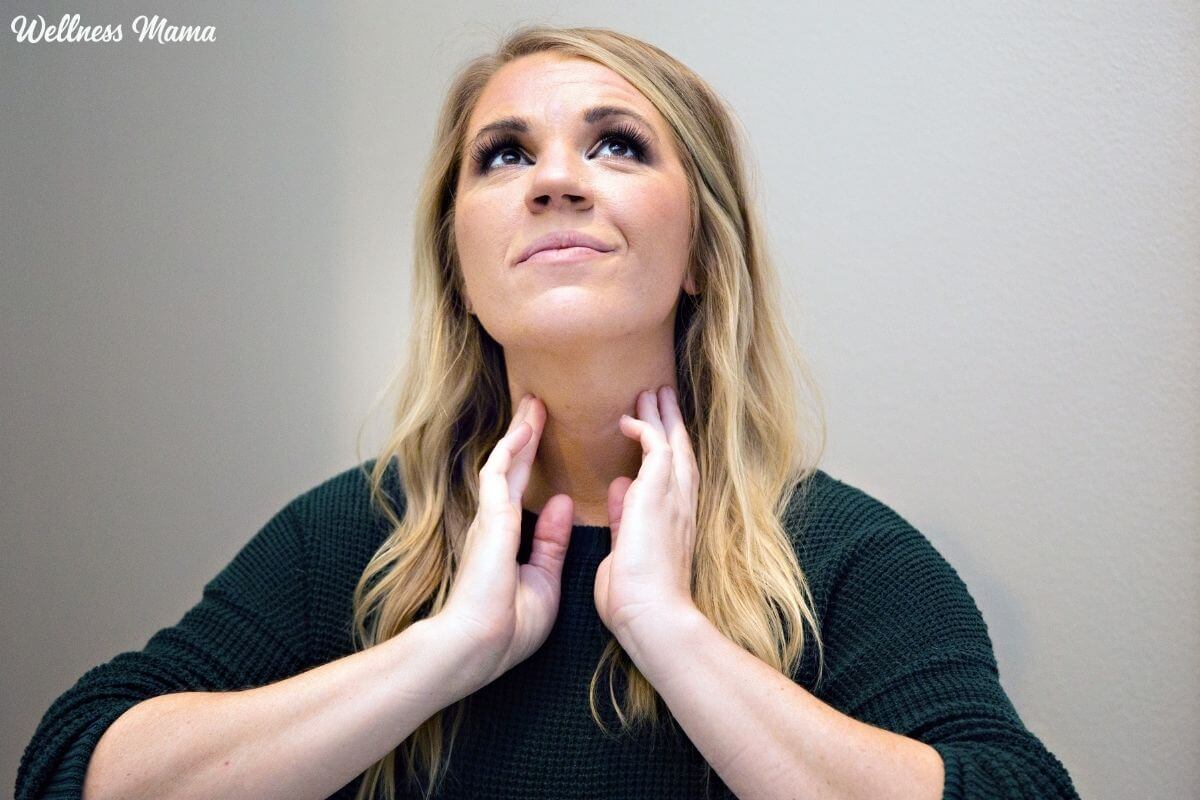
My path to diagnosis with Hashimoto’s thyroiditis was a long and frustrating one. I get questions daily related to what I do for my thyroid, how I got diagnosed and how to find answers. I’ve written this post in collaboration with Dr. Izabella Wentz to help give you resources to find your own answers.
Are Weight and Fatigue Keeping You Sick?
There are symptoms that a lot of us might chalk up to as “just part of life,” but things like fatigue, acid reflux, achy joints, inability to lose weight, hair falling out in clumps, and depression are anything but normal. In fact, these symptoms are usually telling us that there is something going on inside our bodies that we need to address.
When I decided to be a proactive Wellness Mama, I wanted to help other moms (as well as dads and really, everybody!) find solutions for their health needs in a proactive way. And the more I discover about the body, the more I realize that when something flares up, there’s usually a deeper issue going on.
So when we’re experiencing nutrient deficiencies, anemia, leaky gut, food allergies and adrenal dysfunction… we want to know what is really happening and is there a way to get better?
What is Hashimoto’s?
You’ve probably heard of Hashimoto’s thyroiditis, as I’ve written about it in the past. While the name sounds a lot like a Japanese Samurai, it’s actually the leading cause of hypothyroidism (a form of thyroid disease) in the U.S. and it is silently destroying lives.
This might sound like a bold statement, but when you’re so exhausted it literally hurts to get out of bed, or you’re so anxious you think you’re going crazy, or your hair literally won’t stay on your head — you can see how this disease puts life on hold while you struggle to get through each day.
Conservative estimates say that 1 in every 5 women will suffer from Hashimoto’s or another type of thyroid disease at some point during their life. I’m going to share a why this usually happens more often to us women (although men are definitely at risk too!) in the next section, but this condition can dramatically affect moods, weight loss, and even fertility.
How Do You Get Hashimoto’s?
Hashimoto’s is an autoimmune condition that triggers hypothyroidism. Dr. Alessio Fasano, a world-renowned gastroenterologist, discovered that there are three factors that cause an autoimmune disease to manifest.
- Your genes play a huge role
- There is usually an environmental trigger
- You have intestinal permeability
He also found that removing two of these triggers can help people recover their health and even reverse the condition. (source)
Hashimoto’s occurs when your genes are predisposed to an autoimmune condition; there’s a trigger (like a toxin or chemical exposure, nutrient deficiency, a sensitivity to gluten dairy, and soy, infections, etc.) and a leaky gut (intestinal permeability). When these factors arise, the stage is set, and autoimmunity is born. We can’t do a whole lot about our genes, but we can proactively work to address the triggers and intestinal permeability.
Addressing the Source of the Problem
Addressing the triggers and healing your gut is essential to reversing the condition and feeling a whole lot better.
So where do you start? Here are six steps you can begin with:
- Get the correct diagnosis — This might surprise you, but so many people get a misdiagnosis that keeps them in a cycle of sickness for years.
- Get on the right medication — Thyroid medications are very sensitive where too much is harmful and too little is not effective. It’s important to work with your doctor to determine the proper dosing amount.
- Food — Diet is everything. Find a lifestyle diet that works for you and work towards implementing it in your life. A lot of experts recommend the Paleo or Autoimmune Paleo diets.
- Balancing adrenals — Adrenal health is huge because these little glands control our ability to handle stress and the inability to properly handle stress is a key contributing factor to autoimmune disease.
- Healing the gut — Bone broth is excellent for gut health, and is delicious and easy to make.
- Removing toxins — Whether this is clearing pathways by eating a diet that supports your intestines or literally removing toxins from your personal care regimen, you’ll be pleasantly surprised by the increase in energy and overall wellness you experience by taking those chemicals out of your life.
How to Start Feeling Better Today
Many experts recommend beginning with nutrition, and I certainly agree that this is an important first step!
Clean Up the Diet
Start by removing gluten, dairy, and soy from your diet. You may find that Paleo or Autoimmune Paleo options are the best diets to use while you’re trying to get your health back. You guys know how I feel about gluten, dairy, and soy, so when I found out these are the recommended steps to be proactive about preventing thyroid disease, it was a no-brainer! You may find my Wellness Mama Cookbook helpful because it’s full of great recipes to support your gut and fill you and your family with delicious nutrients.
Increase Nutrients
Make sure to get the proper amount of vitamins and minerals to give the body a fighting chance to combat disease and illness. A lot of times, people suffering from thyroid disease and especially Hashimoto’s are nutrient deficient. Loading up on selenium, zinc, vitamin D and even magnesium will drastically improve the way you feel (sometimes overnight!)
Spring Cleaning
Consider doing a little bit of early bird spring cleaning of your personal care products.
Personal care products tend to make women more susceptible to thyroid related conditions than men. Women use an estimate of 12 personal care products with 168 ingredients on a daily basis. Compared to a man using 6 products with 85 ingredients. (source) Both numbers are high, but 168 is nearly double!
When we slather our lotions and creams all over our faces, necks, and bodies, it seeps into our bloodstreams and deposits right into our other organs, especially the thyroid. The thyroid is like a hoarder, and instead of releasing the toxins, it just holds onto them. Over time, this builds up a toxic environment, and if they’re not released properly, they can cause a build-up and wreck havoc on your thyroid gland which then produces the autoimmune response.
Address Infections
Infections can also play a huge role in healing the gut. Discovering whether or not a parasite or some other gut infection is present can actually help you leap over a healing wall. I wrote about SIBO and how it impacts the gut, and it’s something that can affect Hashimoto’s as well. In fact, my friend, Dr. Izabella Wentz, was recovering her health from Hashimoto’s and once she addressed all four of her infections, she saw vast improvement and went on to fully reverse all of her symptoms!
Do I have Hashimoto’s?
I’ve shared a lot of the symptoms related to Hashimoto’s, and you may be wondering if you might have it. My recommendation? Get tested. Being proactive with your health is how you prevent sickness and can discover the best ways to treat the problem if something comes up.
From Dr. Izabella:
There are a variety of ways to test for Hashimoto’s, and I’ll share my top four. Most of these can be ordered by your doctor, though you may want to get a copy of your lab results to make sure the tests are read correctly. There are often discrepancies in test readings where people are misdiagnosed and are told they aren’t sick when in reality they actually have thyroid disease.
It all goes back to the 1950s when the reference scale was developed. Instead of testing people who had normal thyroid function, scientists pulled blood from young people, old people and even folks with hypothyroidism. This skewed the results, and for a long time, people suffered from misdiagnosis. Today, there is a new reference range that is accurate, but not all conventional doctors are aware of it.
Top Tests for Hashimoto’s Thyroiditis
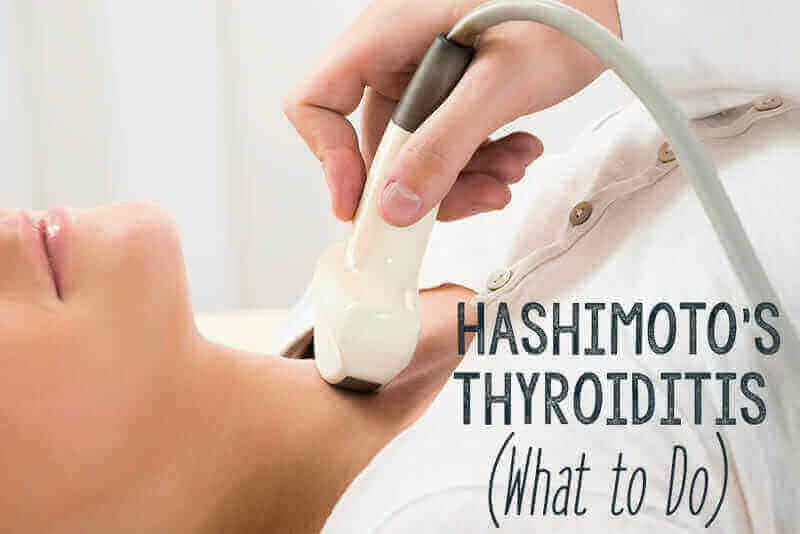
- Thyroid Stimulating Hormone Test— This is a pituitary hormone that measures how much thyroid hormone is in your blood.
- Antibody Tests like Thyroid Peroxidase Antibodies/Thyroglobulin Antibodies (TPO Antibodies/TG Antibodies) Tests— This test is great for catching Hashimoto’s early on. Sometimes you can see the antibodies years, even decades before you see a rise in TSH.
- Thyroid Ultrasound— This is particularly helpful if lab tests are inconclusive. It’ll reveal any abnormalities and is recommended at least once a year, especially if you already know you have thyroid disease or Hashimoto’s.
- Free T3/Free T4— This test measures the level of active hormones in your blood.
Learning More About Thyroid Health
You can definitely go the traditional route and get on medication, have your thyroid removed, and other rough treatments. But, like I shared earlier, Dr. Izabella Wentz, discovered there is another way to get better. It includes a functional approach and complementary therapies to help you get your life back.
Izabella is a world leading thyroid expert and Hashimoto’s overcomer. She’s a trained pharmacist who heard what conventional medicine had to say about her condition, and she didn’t like it one bit. Instead of waiting for her thyroid to burn out and be on medication the rest of her life, she decided to take her health back through becoming her own human guinea pig! She discovered a functional way to recover her health and reversed her Hashimoto’s and has led thousands of others to do the same.
I love her work and think you may find it fascinating as well. She has recently created a documentary series that reveals the truth about thyroid disease. It’s called The Thyroid Secret, and she’s invited our entire community to join her for an exclusive viewing.
You can reserve your free spot here.
This post was written in collaboration with Wellness Mama and Dr. Izabella Wentz.
What are your thoughts about Hashimoto’s? Do you or someone you know suffer from some form of thyroid disease? I’d love to hear your thoughts in the comments!
Continue Reading...How to Know if You Have Hashimoto’s Disease (& What to Do)
source https://wellnessmama.com/155897/hashimotos-disease/?utm_source=rss&utm_medium=rss&utm_campaign=hashimotos-disease
Wednesday 15 February 2017
Wes My Last Home Birth Illegal? (I Need Your Help!)


In short… yes. My amazing last home birth experience that saved me from an 8-week c-section surgery recovery was not legal in my state. If you missed my birth story, the birth (of my now one-year-old) was a breech home VBAC and my 8 pound daughter had perfect APGAR scores.
This post is different from my normal posts and I’m asking for your help and activism today. I would not have had the option to birth naturally in any of the medical facilities in our state. And I need your help to make sure other women have the option to birth at home in my state in the future!
Here’s what to do and scroll down to hear the rest of the story:
Priority #1- Call Legislators
The message line today and tomorrow at 1-800-372-7181 (especially if you live in KY or are a healthcare professional). Say:
- “I want to leave a message for ALL members of the House Health & Family Services Committee: Do not approve any version of HB148 that bans previous c-sections. This puts Kentucky moms and babies in danger.”
- Also leave a message for Rep. Wuchner (woosh-ner): “VBAC bans put lives of Kentucky moms and babies in danger.” (You may have to spell out V-B-A-C for the receptionist.
You can also call them directly here:
- Addia Wuchner – Work: 859-525-6698 At the capitol: 502-564-8100 Ext. 707
- Melinda Prunty – 502-564-8100 Ext. 686
- Danny Bentley-502-564-8100 Ext. 678
- Rep. Robert Benvenuti III- Home: 859-421-1464 Work: 502-564-8100 Ext. 628
- Rep. Larry Brown- Work: 606-886-8132 At the Capitol: 502-564-8100 Ext. 649
- Rep. George Brown Jr.- Work: 502-564-8100 Ext. 620 Home: 859-312-7513
- Rep. Jim Gooch Jr.- Home: 270-667-7327 Work: 502-564-8100 Ext. 687
- Rep. Joni L. Jenkins- Home: 502-447-4324 Work: 502-564-8100 Ext. 692
- Rep. Mary Lou Marzian- Home: 502-451-5032 Work: 502-564-8100 Ext. 643
- Rep. D. Chad McCoy- 502-564-8100 Ext. 664
- Rep. Russ A. Meyer- 502-564-8100 Ext. 623
- Rep. Kimberly Poore Moser- 502-564-8100 Ext. 694
- Rep. Darryl T. Owens- Home: 502-584-6341 Work: 502-564-8100 Ext. 685
- Rep. Steve Riley- Home: 270-646-6821 Work: 502-564-8100 Ext. 680
Priority #2- Email Them Too!
Email members of the House Health and Family Services Committee. Some things to say:
- Please, do not approve any version of HB148 that bans previous c-sections. This puts Kentucky moms and babies in danger.
- Please approve HB148 as written to give birthing women access to birthing options and CPMs.
- Please continue to support and vote for HB148 if it passes committee as written.
- Share a personal (kind) story of a positive birth experience or talk about how homebirth benefits your state (if it is legal in your state). Include a picture of your baby if you want to 🙂
Their Emails Are:
- Addia Wuchner – Addia.wuchner@lrc.ky.gov and addia4ky@gmail.com (she is a former nurse and the one trying to place these limitations- please be kind but also mention if you are a doctor, nurse or other medical professional)
- Melinda Prunty (here is the form to email her)- also try melinda.prunty@lrc.ky.gov
- Danny Bentley- (here is the email form)
- Rep. Robert Benvenuti III- (here is the email form)
- Rep. Larry Brown- Larry.Brown@lrc.ky.gov
- Rep. George Brown Jr.- george.brown@lrc.ky.gov
- Rep. Jim Gooch Jr.- Jim.Gooch@lrc.ky.gov
- Rep. Joni L. Jenkins- Joni.Jenkins@lrc.ky.gov
- Rep. Mary Lou Marzian- MaryLou.Marzian@lrc.ky.gov
- Rep. D. Chad McCoy- Chad.McCoy@lrc.ky.gov
- Rep. Russ A. Meyer- (click here to get to email contact form)
- Rep. Kimberly Poore Moser- (contact form here)
- Rep. Darryl T. Owens- Home: (contact form here)
- Rep. Steve Riley- Steve.Riley@lrc.ky.gov
Priority #3- Also Reach out on Social Media
Say something like:
Please do not approve any version of HB148 that bans previous c-sections. This puts Kentucky moms and babies in danger.
Find them here:
- Rep. Wuchner- Twitter- @addiawuchner and her FB Page
- Rep. Prunty- Twitter- @MelindaPrunty and her FB page
- Danny Bentley- Twitter- @drdanbentley and his FB page
- Rep. Larry Brown- Facebook page
- Rep. George Brown Jr.- Twitter- @GeorgeBrownky77
- Rep. Jim Gooch Jr.- FB page
- Rep. Joni L. Jenkins- Twitter- @RepJoniJenkins
- Rep. Mary Lou Marzian- Twitter
- Rep. D. Chad McCoy- Twitter- @DChadM
- Rep. Russ A. Meyer- Twitter- @RepRussMeyer
Was My Birth Illegal?
Sounds like a crazy question… but thanks to the laws where we live (in Kentucky), home birth is not technically a supported birth option like it is in 31 other states. I should clarify that it wasn’t technically illegal for me to birth at home, but that my state does not currently license certified professional midwives (CPMs). This makes it difficult (and risky) for these midwives (who are often certified in other states) to serve families and have access to necessary supplies.
Certified Professional Midwives (CPMs) are nationally credentialed midwives who provide primary maternity care. CPMs are the only maternity care provider specifically trained to attend births outside the hospital.
They are trained to provide health-promoting and preventative care that is evidence based and avoids unnecessary use of drugs and interventions. CPMs are licensed in 28 states but not yet licensed in Kentucky. Licensing Certified Professional Midwives is the best way to ensure that those families who choose out-of-hospital birth will have access to quality maternity care.
Homebirth IS Happening
Kentucky women (and women all over the US) are choosing home birth. In fact, last year, the percentage of KY home births was above the national average, yet women are not supported in this option, having to find midwives through word of mouth or choosing to birth unassisted (without a midwife) if they are unable to find a midwife near them.
In a state with one of the highest c-section rates in the country, home birth midwives offer a safe alternative and we’ve been working to change the laws and support this option in KY. The World Health Organization, the American Public Health Association and the Royal College of Obstetricians and Gynecologists (in the UK) all support home birth as a birth choice, yet some states in the US make this option difficult or impossible for women, despite evidence of its safety.
With the WHO calling for the US to work to lower its unnecessarily high c-section rates, supporting home birth as a birth choice is increasingly important. Women are already choosing this option and will continue to do so, and supporting these options with access to lab testing, ultrasounds and necessary medications will help keep moms safe. Consider these studies and the difference in intervention rates in home births vs. hospital births:
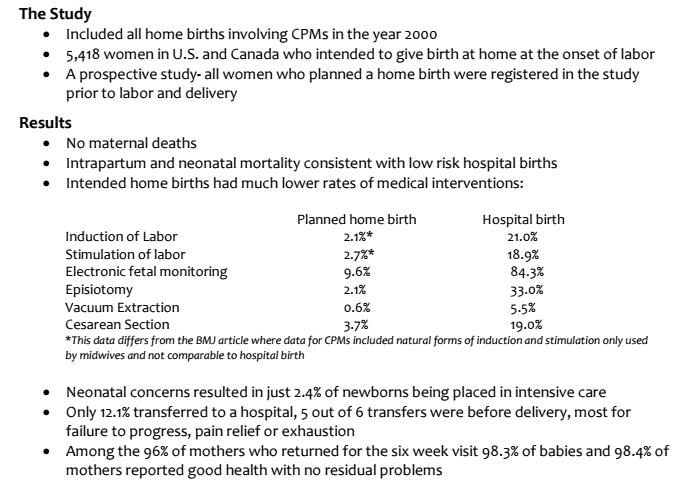
and this one…
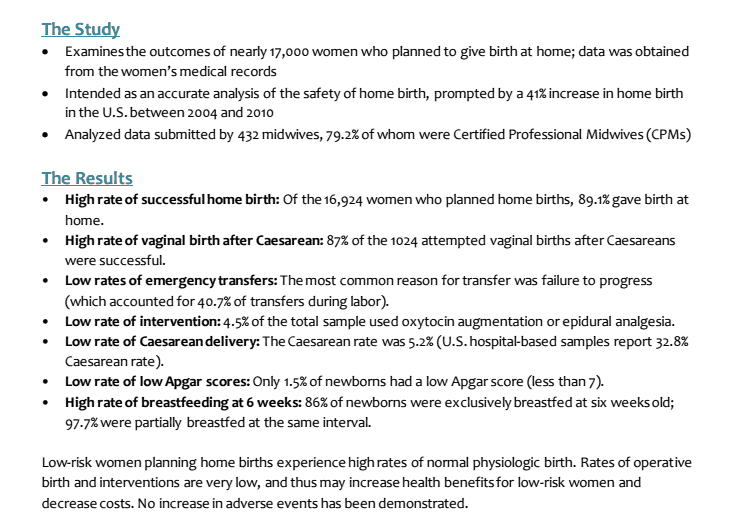
VBAC Safety

My Birth: The Bottom Line
Home birth is not for everyone, but it should be a supported option for women who choose it. My birth would not have been possible in a hospital in my state. I did not even have that option. My midwife’s VBAC rate is 99%. My local hospital’s VBAC rate is less than 20%. My hospital’s breech rate is approximately 0%.
No matter what type of birth you have personally chosen, please help me and others give the women in my state the right to choose their own birth options. I’m happy to do the same for you and your state if it is ever needed.

Continue Reading...Wes My Last Home Birth Illegal? (I Need Your Help!)
source https://wellnessmama.com/84761/was-my-birth-illegal/?utm_source=rss&utm_medium=rss&utm_campaign=was-my-birth-illegal
Monday 13 February 2017
What Is Cupping Therapy? (Or Why Athletes Have Red Spots)

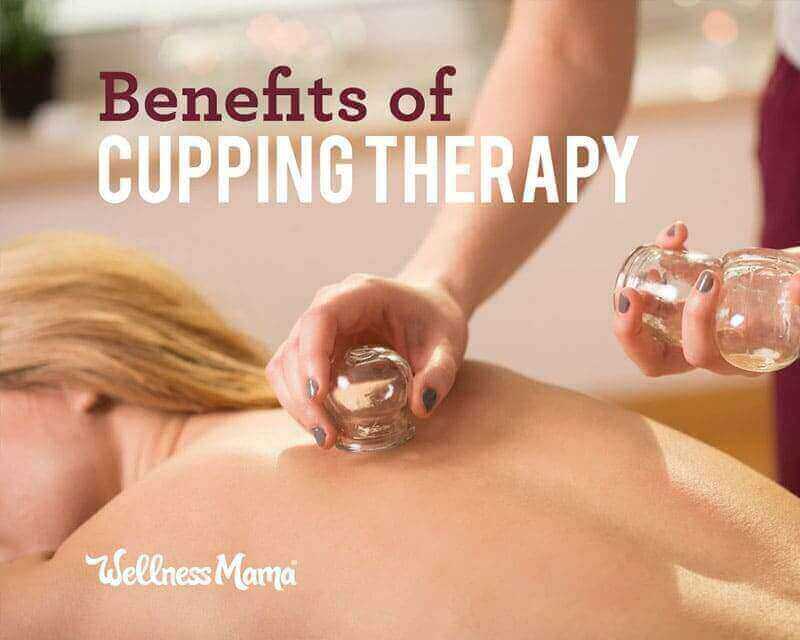
Many people got curious about cupping therapy after seeing the red round marks on Olympic athletes like Michael Phelps during the summer Olympics.
Cupping is essentially a form of body work or therapy that uses suction from the cups to achieve the desired results. This may stimulate blood flow, relieve pain, and provide many other health-promoting effects.
However, before going out and getting cupping therapy for yourself, it is a good idea to understand what it is, what it’s used for, and the potential pitfalls.
What Is Cupping Therapy?
Cupping therapy involves placing a plastic cup on the skin and pumping air out of the space inside the cup. This creates suction that breaks capillaries, the small blood vessels near the skin surface, and results in red (or purple) marks where the cup was. These were the circles seen on many athletes in the Olympics.
There are two types of cupping therapy: wet and dry. Dry therapy uses the action of the suction cup alone. Wet cupping (more commonly practiced in Persian medicine, called Hijama), involves bloodletting inside the suction cup.
Dry cupping can be done two ways:
- In a single area (also called static cupping)
- By moving the cup around to several places (more like a massage but with suction instead of pressure)
Origins of Cupping Therapy
Historical records document cupping use in Chinese medicine over 3,000 years ago. Other records indicate that the ancient Egyptians and Greeks practiced it as well. Hippocrates, known as the father of medicine, even used it. Nowadays, cupping is practiced as part of traditional Oriental medicine (Chinese, Korean, and Japanese) and Persian medicine.
Interestingly, the Chinese and the Egyptians both discovered cupping independently thousands of years ago? When the same healing tool is found in opposite parts of the world (before there was the internet, mind you) and the tool is still practiced thousands of years later, it is a testament to its benefits.
Traditional Chinese Medicine (TCM) historically placed cups on specific acupuncture points to stimulate the points. For example, someone with allergies and colds would be thought to have a stagnation of the lungs. In that case, a cup is placed on an acupuncture point for the lungs, and will often turn into the darkest color of bruises even though all the cups are placed on the skin with the same negative pressure. TCM practitioners consider that cupping works better the darker color the mark is, because the darker color means more stagnation is released.
Before there were plastic suction cups, practitioners used glass cups and flame (fire cupping). Burning a piece of cotton inside the cup removed oxygen from the air, causing negative air pressure. When the practitioner immediately put the cup on the skin, the skin underneath the cup would be sucked into the cup.
Modern Use of Cupping
While cupping is used in TCM for overall health, conventional physiotherapists use it too. Modern biomedical literature lists cupping as a pain-relief tool or as a tool for myofascial release. Many massage techniques involve manipulating blood to flow into the muscles to release trigger points and flush out inflammation. Similarly, cupping therapy can do the same thing for areas of the body with less fat tissue, such as the back and shoulders.
In a review article in the Journal of Bodywork and Movement Therapy, Rozenfeld and Kalichman (both academic physiotherapists) described the physiological effects of cupping:
“Mechanically, cupping increases blood circulation, whereas physiologically it activates the immune system and stimulates the mechanosensitive fibers, thus leading to reduction in pain.”
Sometimes a musculoskeletal issue that is stagnant in its healing process can be stimulated into healing by slightly irritating the tissue or initiating some inflammation. This concept applies to prolotherapy, where a foreign substance (usually dextrose) is injected into an injured joint to stimulate inflammation. Similarly, because cupping creates localized inflammation, it can have this effect on a stagnant injury in addition to stimulating more blood and lymph flow to that area.
Does Cupping Therapy Really Work?
Many people, including celebrities and athletes, attest to the benefits of cupping therapy. Mechanistically, it makes sense that cupping therapy can reduce pain and support healing.
When it comes to clinical evidence, however, the jury is still out, according to Dr. Brent Bauer of the Mayo Clinic’s Complementary and Integrative Medicine Program (source). This could be for a few reasons:
1. A limited number of high quality large-scale clinical trials
Presently, the clinical evidences supporting the effectiveness of cupping for low back pain and neck pain are promising. The medical world feels they need more rigorous clinical evidence before they can conclude that it really works.
2. Placebo effect
When medications are tested, it is usually tested against a placebo—a sugar pill dressed up as the medication. This ensures the effectiveness of the medications is truly because of the medications and not because the patient thinks they have taken the medication. Placebo effect can account up to 30% of the results in medicine. For this reason, scientists believe it best to compare any treatment against a placebo rather than a no-treatment group.
The use of placebo to test the effectiveness of TCM itself is controversial. First, it’s hard to come up with a physical placebo for acupuncture or cupping therapy that can isolate the belief that you’ve had the treatment from the treatment itself. Second, TCM is a mind-body medicine approach rather than just the body, so we can’t truly isolate the mental from the physical healing with TCM.
3. Average vs. Individual
Because randomized control trials look at people collectively as a group they may miss out on individual differences. Back pain, for instance, could result from a myriad of causes, such as sciatica, herniated disks, tight back muscles, SI joint disorders, or simply poor posture. Cupping therapy may be more effective against some of these causes and not others. In order to know for sure more thorough clinical study is necessary.
In real life, a clinician—be it a doctor, physiotherapist, or TCM practitioner—should be able to help identify causes health issues and treat with an individualized approach. Personal experience and a clinician’s expertise should help decide whether cupping therapy is right for you.
Managing the Risks of Cupping Therapy
Risks of injuries from cupping include:
- Muscle sprains or deep bruises from very heavy suction
- Burns from fire cupping (only get fire cupping from well trained practitioner)
- Infections from dirty cups
In order to safely and effectively receive cupping therapy, be sure to:
- Receive cupping therapy from qualified practitioner such as a TCM practitioner or acupuncturist. If you are receiving cupping therapy for myofascial work, consult your physiotherapist, massage therapist, or chiropractor for the best way to go about it and specific contraindications that you should be aware of.
- Pay attention to the pain levels and communicate with your practitioner as you are receiving cupping so they can remove the cups or adjust the pressure. It can feel uncomfortable to have suction cups on your skin, but the pain should not exceed a 2 out of 10.
- Only receive cupping therapy from hygienic clinics that sterilize their tools, and clean their cups between patients.
- Avoid cupping around areas with small, sensitive muscles and nerves. This includes the neck and jaws.
- Don’t try cupping near open wounds and fresh injuries.
- Avoid cupping if you are on a blood thinning medication or have a bleeding disorder.
- Avoiding leaving cups on for more than 15 minutes as the risks may exceed the benefits by this point.
- Always check with your primary doctor and any other necessary health professionals before beginning any type of therapy, including cupping.
Have you tried cupping therapy? What was your experience? Please weigh in.
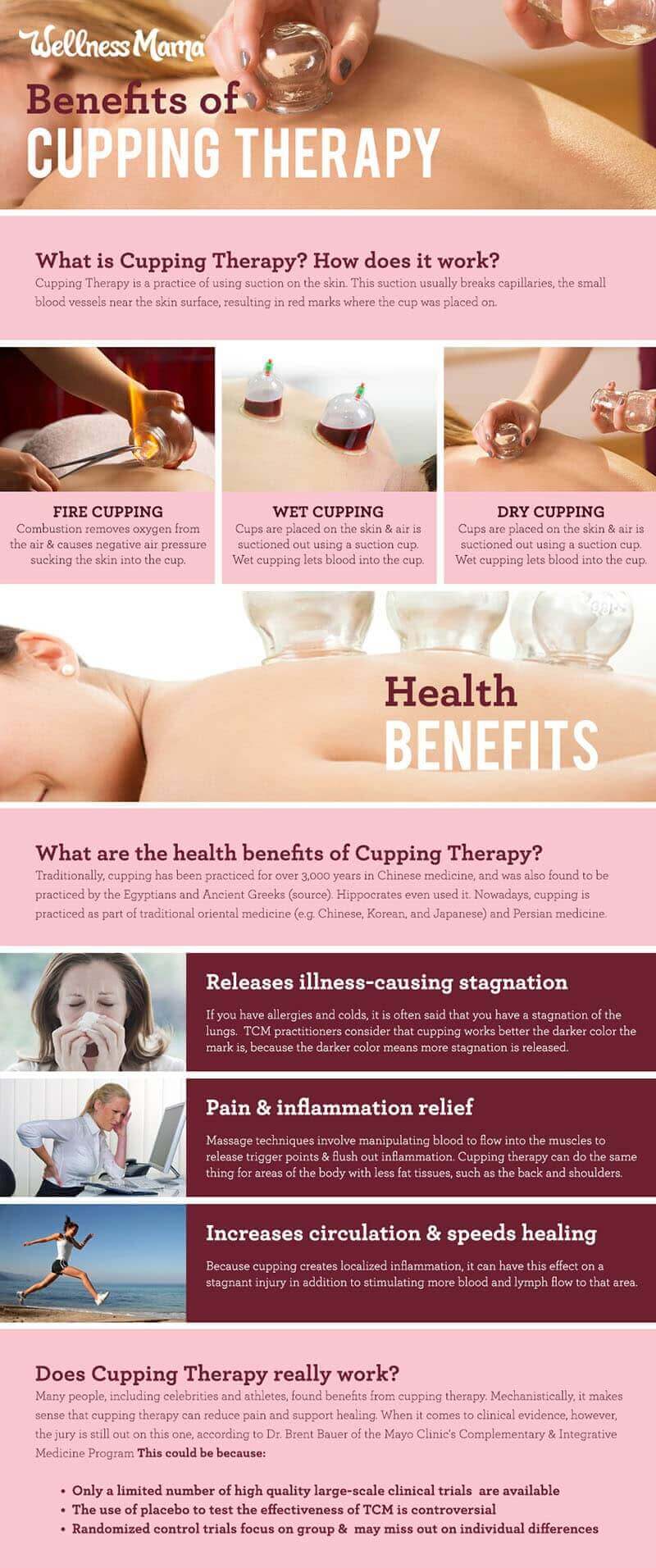
Continue Reading...What Is Cupping Therapy? (Or Why Athletes Have Red Spots)
source https://wellnessmama.com/129773/cupping-therapy/?utm_source=rss&utm_medium=rss&utm_campaign=cupping-therapy
66: Vote with Your Dollars to Make (Real) Change with John Durant


One of the trickiest things I do as a health blogger is decide which companies and products to use for my family and to recommend to others. I take this responsibility seriously, so I know I’m in good company when I spend time with my friend John Durant, one of the 100 Most Influential People in the health world.
Now as a venture capitalist, John Durant makes it his primary mission to find and fund the best health-focused companies through his company, Wild Ventures.
He’s the best person I know to give insight into the future of health—and how we can vote with our dollars to support companies willing to shape and change it for the better.
John Durant, Modern Caveman
First, a little about John Durant, because he’s a fascinating person. His New York Times bestselling book The Paleo Manifesto rocketed the Paleo diet into popularity, and he continues to pursue health with a passion.
On any given day you might find John Durant running barefoot through Central Park, experimenting with intermittent fasting, or doing a polar bear swim in the Atlantic. Now a sought-after health expert, he’s been featured by The New York Times, The Atlantic and appeared on The Colbert Report and NPR.
John’s portfolio includes some of my favorite companies, where he works behind the scenes to make them successful: Thrive Market, Exo, AO Biome, and Kettle and Fire just to name a few.
Let’s find out the inside scoop on how companies, big and small, play a part in our health future.
The Mighty Dollar … in Your Pocket
I’ve been criticized before for sometimes supporting large companies that offer some—but not all—health-conscious products. And there is of course good reason to be wary. Huge corporations have a track record of often not having our best interests in mind.
Still, when we spend our dollars on healthy products, these companies listen and respond. And the bigger the company that makes a change toward healthier products, the wider the impact. Even in the last few years, we’ve seen an exciting amount of change for the better.
At least that’s what I think … and I do even more so after hearing John’s insider perspective on the health future and where we’re headed.
Change the demand, and they will follow! We as consumers are in control!
In This Podcast, You’ll Learn
- all about the real power consumers have to shape markets … with just their dollars!
- which health trends companies respond to (and why)
- what John Durant really thinks about Walmart and big box stores (it’s not what you might think!)
- the inside story on successful startup companies like Thrive Market and US Wellness Meats
- why the way we shop and what we buy has a ripple effect on the environment
- why supporting companies you like is more effective than boycotting ones you don’t
- the downsides to regulation and how it works against mission-focused startups
- why being a “health fanatic” isn’t the only way to wellness
- and more!
Resources We Mention
John Durant’s company Wild Ventures
The Paleo Manifesto by John Durant
Spartan Fit!: 30 Days. Transform Your Mind. Transform Your Body. Commit to Grit. by John Durant
Special Thanks to Today’s Podcast Sponsors
This podcast episode is brought to you by Perfect Supplements. If your family doesn’t like some nutrient-dense foods like liver or kale, Perfect Supplements is the answer. They concentrate superfoods in capsule form so you can get all of the benefits without cooking something no one will eat.
Perfect Supplements is USA made, incredibly reasonably priced, and super selective in purity and sourcing. Our family uses their desiccated liver capsules (from 100% grass fed cattle). This product has been recommended by Tim Ferriss and Dave Asprey, and now that I’ve tried it I can see why. We also use Perfect Supplements collagen, greens powder, and fermented kale.
You can get 10% off of any order by going to perfectsupplements.com/wellnessmama and using the coupon code WELLNESSMAMA10. The best part is they always offer bulk discounts too!
This episode is also sponsored by The Wellness Mama Cookbook. My kids helped me test these recipes so they are definitely family-approved. They’re also mom-approved and here’s why.
I know what it is to be busy. I made sure the majority of the Wellness Mama Cookbook recipes can be made in under 30 minutes and many of them only one pan (who wants to wash dishes?). All of my 200+ grain-free recipes replace processed sugar and flour with nutrient-dense foods and vegetables kids love!
You can check out the cookbook at any major bookstore or on Amazon. I’m delighted to share my family’s favorite recipes with all of you!
Continue Reading...66: Vote with Your Dollars to Make (Real) Change with John Durant
source https://wellnessmama.com/podcast/vote-with-your-dollars/?utm_source=rss&utm_medium=rss&utm_campaign=vote-with-your-dollars
